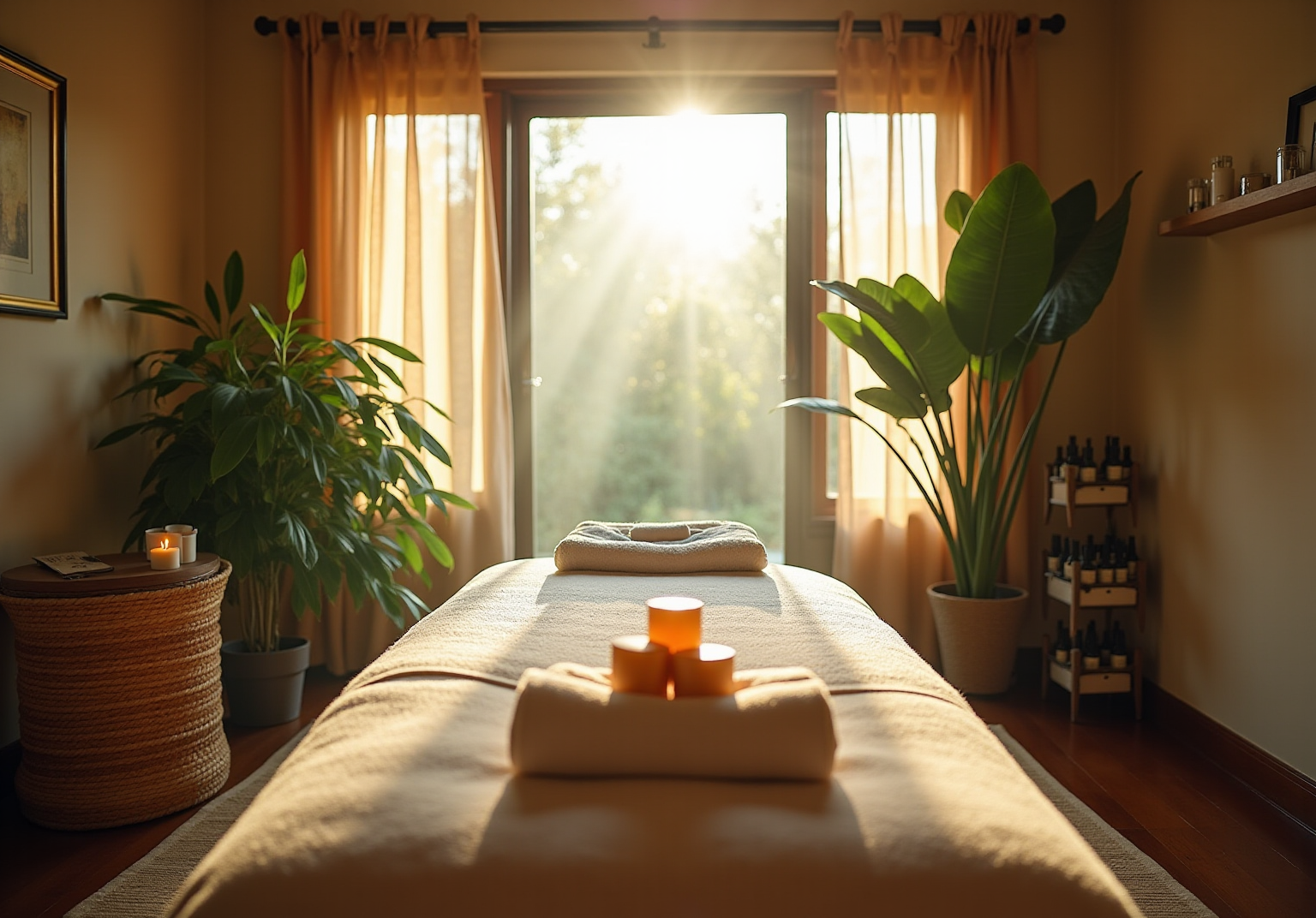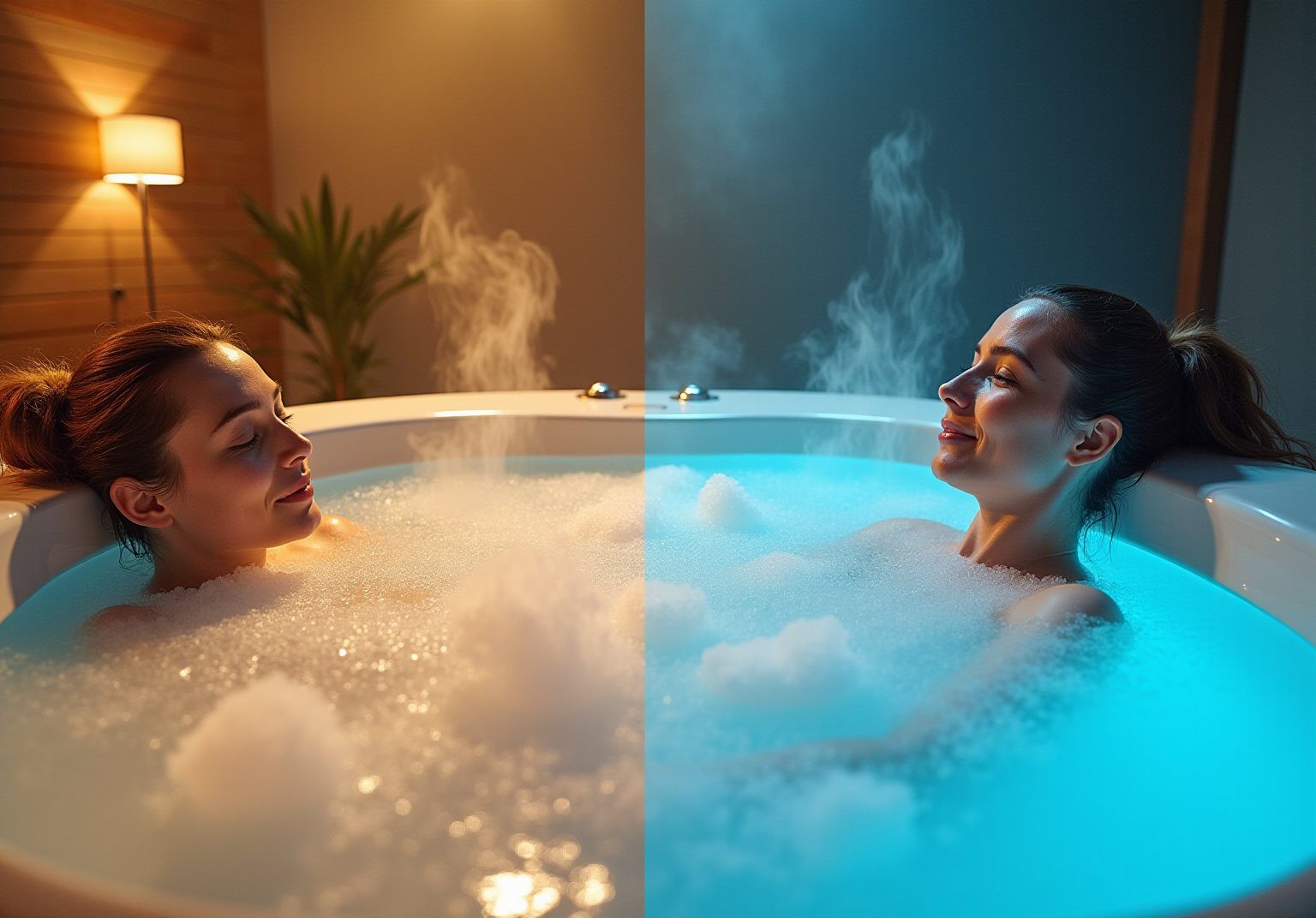Comparing Cellulite Treatments: What You Need to Know
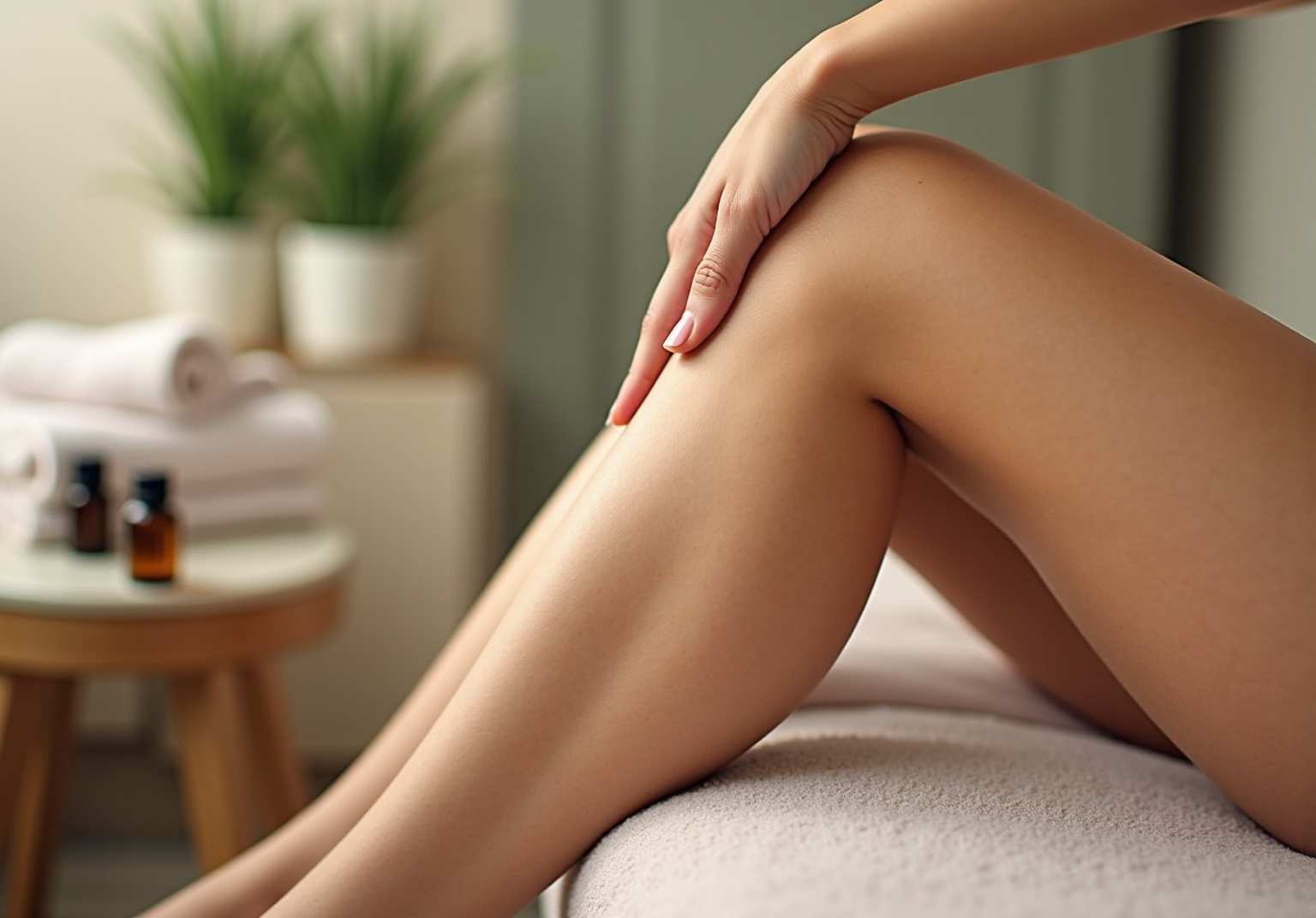
Overview
Cellulite treatments encompass a range of options, including non-invasive, minimally invasive, and surgical methods. Each category presents distinct advantages and drawbacks tailored to individual needs and preferences. It is crucial to engage in personalized consultations with qualified experts to identify the most effective treatment.
Factors such as:
- Severity
- Skin type
- Budget
- Desired outcomes
play a significant role in this decision-making process. Furthermore, a comprehensive approach that integrates multiple therapies may be necessary to achieve optimal results.
Introduction
Cellulite affects up to 90% of women, presenting a significant challenge due to its dimpled skin texture, often influenced by genetics, hormones, and lifestyle choices. As the demand for effective solutions escalates, individuals are increasingly seeking a variety of treatments that claim to reduce its appearance.
With numerous options available—from non-invasive creams to surgical procedures—navigating this complex landscape can be daunting. This article explores the comparative effectiveness of various cellulite treatments, providing insights that empower readers to make informed decisions tailored to their specific needs.
Understanding Cellulite: Causes and Characteristics
Cellulite is a prevalent condition marked by a dimpled appearance on the skin's surface, primarily affecting the thighs, buttocks, and abdomen. This phenomenon results from the complex interaction between fat cells and the connective tissue beneath the skin. Key factors that contribute to the development of skin dimpling include:
- Genetics
- Hormonal fluctuations
- Poor circulation
- Lifestyle choices such as diet and physical activity
Notably, studies indicate that up to 90% of women may experience skin dimpling, with 62% attributing its onset primarily to lifestyle choices, despite the condition being largely anatomical in nature.
Recent research underscores the significant role of hormones, particularly estrogen, in exacerbating the condition. This hormonal influence can lead to structural changes in the skin and underlying tissues, suggesting that approaches focusing on hormonal balance may offer more effective solutions for certain individuals. Additionally, genetics play a crucial role, as variations in the fibrous septal network and adipose layers can predispose some women to develop more pronounced skin dimpling.
Understanding these contributing factors is essential for selecting that address the root causes rather than merely alleviating symptoms. At Tsavo Wellness, we offer advanced lymphatic massage services utilizing the Slimyonik® Air System, designed to enhance circulation and promote detoxification, which may support cellulite treatments by improving the appearance of cellulite. This method involves alternating compression and decompression, providing a soothing experience while revitalizing the body. It can be integrated with other therapies, such as SQT Bio-Microneedling, to create a comprehensive approach tailored to individual needs.
It is important to note that Slimyonik® is generally safe for healthy adults; however, individuals with specific medical conditions should consult a healthcare provider prior to commencing treatment. Dermatologists emphasize that while various therapies are available, none have been definitively proven to eliminate cellulite entirely. Instead, a combination of methods customized to individual needs may yield the best outcomes, highlighting the importance of personalized care plans.
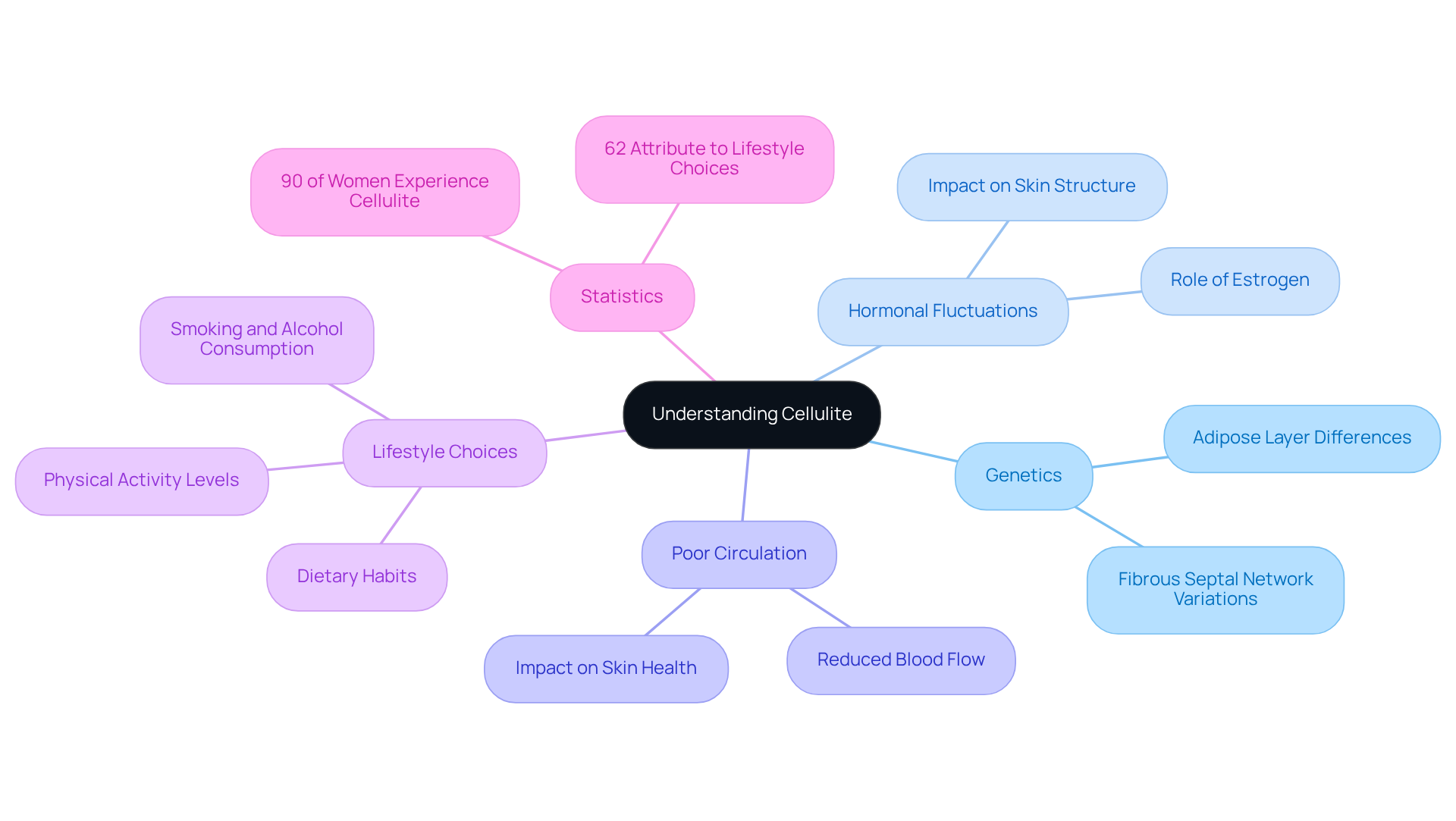
Overview of Cellulite Treatment Options
Cellulite treatments can be classified into three primary categories: non-invasive, minimally invasive, and surgical options. Non-invasive procedures, including topical creams, acoustic wave therapy, and radiofrequency methods, focus on enhancing skin texture and reducing the visibility of dimpling without significant recovery time. These methods are favored for their convenience and lower risk profiles, making them attractive to individuals seeking gradual improvements. Dr. Dendy Engelman, a board-certified dermatologist, asserts, 'The most effective method to handle and diminish the visibility of cellulite treatments is through a comprehensive strategy that encompasses lifestyle habits, skincare routines, and, for certain individuals, in-office procedures.'
Minimally invasive options, such as mesotherapy and subcision, employ injections or small incisions to directly address fat deposits and connective tissue. For example, mesotherapy involves customized formulations administered through ultra-fine needles, stimulating collagen production while minimizing damage to surrounding tissues. This approach has shown promising results, with patients reporting within weeks. Clinical trials indicate that the benefits of these therapies can last for up to a year, making them a viable choice for many.
Surgical procedures, including liposuction, are generally reserved for more severe cases of cellulite. Although they can yield dramatic results, these options carry higher risks and longer recovery times, rendering them less suitable for those seeking quick fixes. Each cellulite treatment option presents distinct advantages and disadvantages, highlighting the importance of personalized consultations with qualified experts to determine the most appropriate cellulite treatments based on individual needs and circumstances. Additionally, it is essential to consider the cost of each approach, as this can significantly influence decision-making for prospective patients.
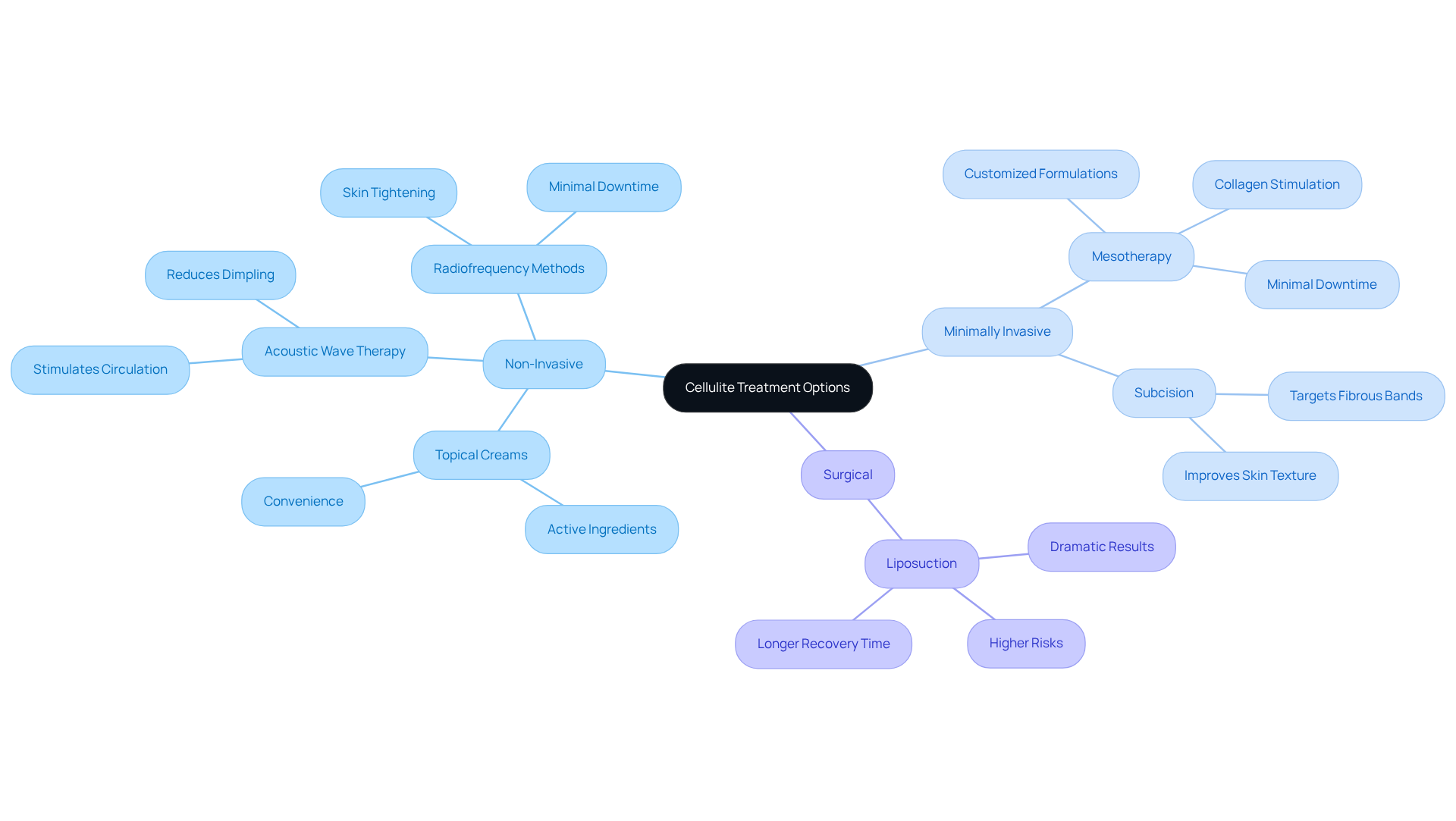
Comparative Effectiveness of Popular Cellulite Treatments
When evaluating the effectiveness of established skin therapies, such as cellulite treatments, key factors include their mechanisms, duration of results, and patient satisfaction. Injectable solutions like QWO, recognized as the first FDA-approved injectable for skin dimpling, have emerged as a significant alternative in the realm of cellulite treatments, showing substantial improvements in the severity of skin dimpling, with effects lasting up to six months. Clinical trials indicate that around 75% of patients experienced notable reductions in skin dimpling after QWO treatment, emphasizing its efficacy as one of the effective cellulite treatments. However, it is essential to acknowledge that QWO may lead to temporary bruising at injection sites, potentially impacting patient experience.
Conversely, cellulite treatments like radiofrequency procedures have also proven effective in enhancing skin texture and reducing the visibility of dimpling, with results typically lasting several months. Acoustic wave therapy, another non-invasive option, stimulates collagen production and improves skin elasticity; however, outcomes can vary significantly among individuals, often necessitating multiple sessions for visible improvements. While many therapies offer short-term relief, a may provide the most sustainable long-term results, ensuring a more comprehensive approach to diminishing dimpling.
Furthermore, it is crucial to note that QWO has ceased production as of December 2022, which may affect its availability for future patients. As Dr. Mraz Robinson highlights, uncertainty remains among patients regarding solutions for skin dimpling, as many have encountered ineffective options in the past.
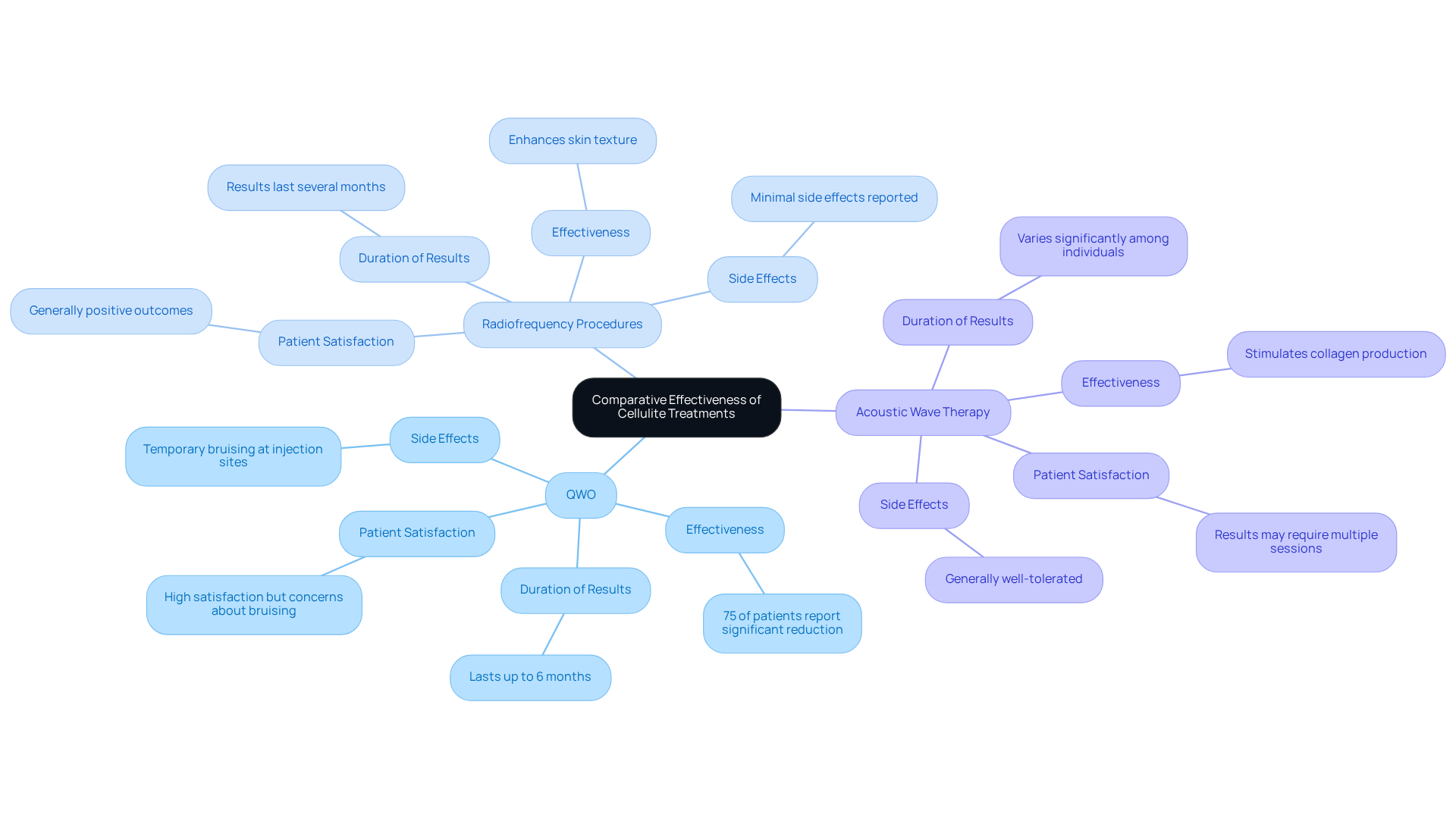
Choosing the Right Treatment: Factors to Consider
Selecting the appropriate cellulite treatments for skin dimpling is a critical decision influenced by several factors. First, individuals must assess the severity of their cellulite and their skin type, as certain cellulite treatments may yield better results for specific conditions. Budget considerations are equally vital, as the costs of cellulite treatments can vary significantly; non-invasive alternatives typically range from $2,500 to $3,500, while patients can expect to spend approximately $4,000 to $6,000 annually to treat an area the size of the buttocks. Furthermore, personal preferences regarding downtime and invasiveness are essential in the decision-making process. For instance, those seeking immediate results may lean towards minimally invasive options, whereas individuals who prefer a gradual approach might opt for non-invasive procedures. Notably, Avéli presents a one-time, long-term solution for cellulite treatments, appealing to those desiring lasting results. Consulting with a qualified professional is invaluable; less than 1% of customers surveyed reported issues with services at The Dermatology and Laser Group, highlighting the significance of professional guidance. Dermatologists emphasize the necessity of understanding the unique characteristics of each cellulite treatment and the realistic outcomes associated with them. For example, procedures like Cellfina may necessitate recovery time, with bruising and swelling potentially lasting several weeks. To enhance clarity, consider the following pros and cons of different treatment options:
- Minimally Invasive Treatments:
Pros: Immediate results, shorter recovery times.
Cons: May not provide permanent solutions. - Non-Invasive Treatments:
Pros: Lower cost, minimal downtime.
Cons: Gradual results, may require multiple sessions.
Incorporating insights from dermatologists, such as Dr. Tehrani's remarks on the temporary nature of interventions and Dr. Tanzi's observations regarding the minimal downtime for certain procedures, can further inform your decision-making process. Ultimately, understanding the is essential for making an informed choice.
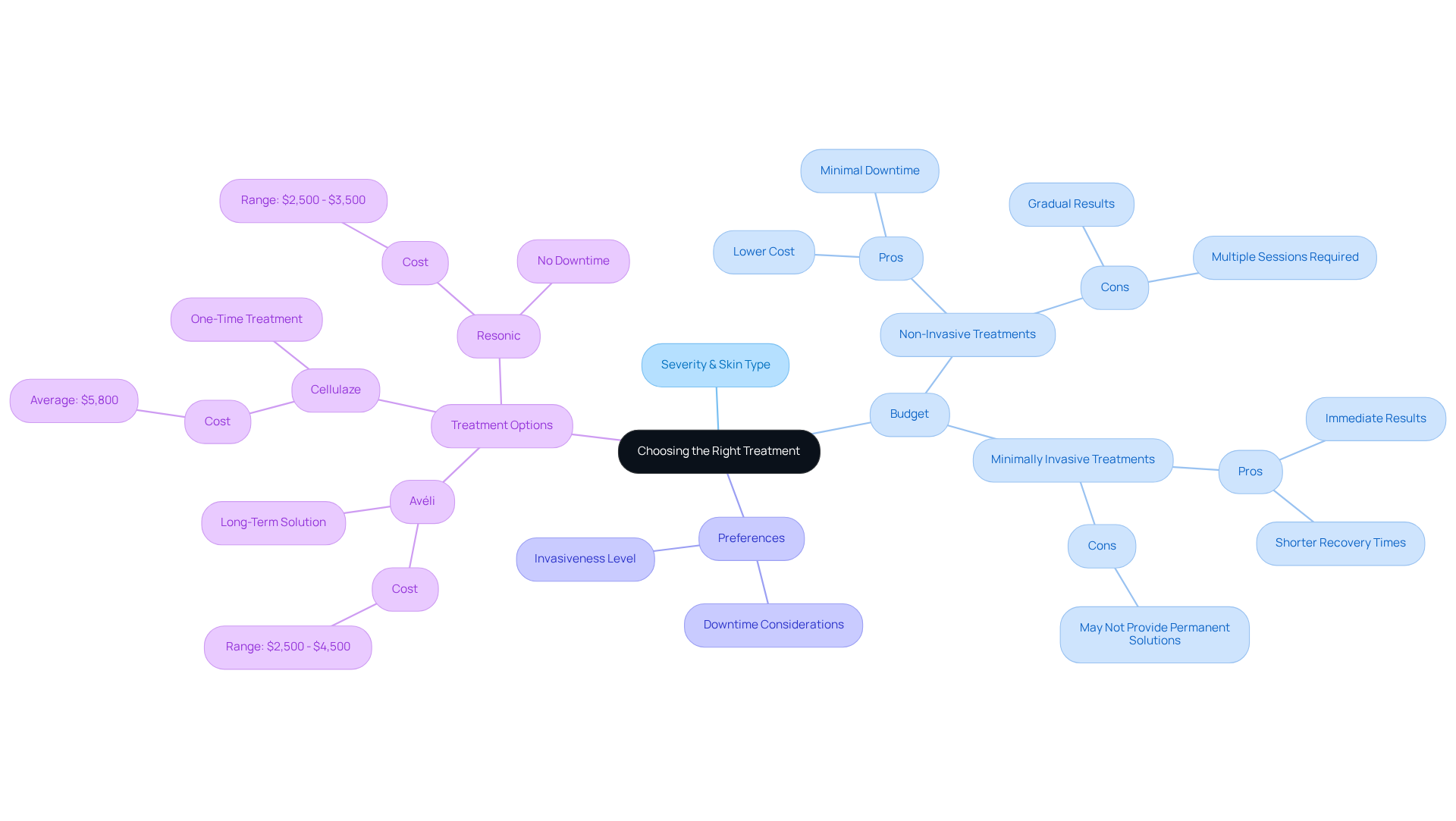
Conclusion
Cellulite is a prevalent condition affecting many individuals, resulting from a complex interplay of genetics, hormonal changes, and lifestyle factors. Understanding these underlying causes is essential for selecting effective treatments that extend beyond mere symptom relief. By concentrating on personalized approaches, individuals can address their unique circumstances and preferences, ensuring a more tailored and potentially effective treatment experience.
This article highlights various cellulite treatment options, including non-invasive, minimally invasive, and surgical methods. Each category presents distinct advantages and challenges, underscoring the importance of consulting with qualified professionals to determine the most suitable approach. Key insights reveal that while some treatments may offer immediate results, others may necessitate a more gradual commitment. The comparative effectiveness of popular therapies emphasizes the necessity of a comprehensive strategy that combines multiple methods for optimal results.
Given the complexities surrounding cellulite, it is vital for individuals to remain informed and proactive in their treatment choices. By considering factors such as severity, skin type, budget, and personal preferences, a more informed decision can be made. Engaging with qualified dermatologists can further enhance understanding and lead to successful outcomes. Embracing a holistic view of cellulite management not only empowers individuals but also fosters a more positive relationship with their bodies.
Frequently Asked Questions
What is cellulite and where does it commonly appear on the body?
Cellulite is a prevalent condition characterized by a dimpled appearance on the skin's surface, primarily affecting the thighs, buttocks, and abdomen.
What causes the development of cellulite?
The development of cellulite is influenced by several factors, including genetics, hormonal fluctuations, poor circulation, and lifestyle choices such as diet and physical activity.
How common is cellulite among women?
Studies indicate that up to 90% of women may experience cellulite, with 62% attributing its onset primarily to lifestyle choices.
What role do hormones play in the development of cellulite?
Hormones, particularly estrogen, significantly contribute to the exacerbation of cellulite by causing structural changes in the skin and underlying tissues.
How does genetics influence the appearance of cellulite?
Genetics can predispose some women to develop more pronounced cellulite due to variations in the fibrous septal network and adipose layers beneath the skin.
What treatments are available for cellulite?
Treatments for cellulite include advanced lymphatic massage services, such as the Slimyonik® Air System, which enhances circulation and detoxification. This method can be combined with other therapies like SQT Bio-Microneedling for a comprehensive approach.
Is Slimyonik® safe for everyone?
Slimyonik® is generally safe for healthy adults; however, individuals with specific medical conditions should consult a healthcare provider before starting treatment.
Can any therapy completely eliminate cellulite?
Dermatologists emphasize that no therapy has been definitively proven to eliminate cellulite entirely. A combination of methods tailored to individual needs may yield the best results.

